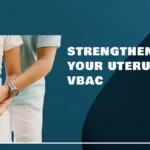
Nipple stimulation is a natural and non-invasive method that has been used for centuries to induce labor. It involves gently rubbing or rolling the nipples to trigger contractions in the uterus. This technique is often recommended as a complementary approach to medical interventions, especially for women who wish to avoid or reduce the use of synthetic oxytocin. In this article, we will explore how to stimulate nipples to induce labor and its potential benefits during childbirth.
Is it Safe to Induce at Home?
It is not recommended to induce labor at home without medical supervision. Inducing labor carries various risks, including failed induction, low fetal heart rate, infection, uterine rupture, and bleeding after delivery.
There are natural ways to induce labor, such as exercise, sex, nipple stimulation, acupuncture, and acupressure. However, it is important to consult with a healthcare provider before trying any of these methods, as some of them may be discouraged or potentially dangerous.
It is also important to note that induction of labor should only be done when medically necessary, such as when there’s concern for the mother’s or baby’s health, or when labor doesn’t begin after the water breaks. Induction of labor should be done under medical supervision in a hospital or birthing center, not at home.
What is the evidence on Nipple Stimulation?
Studies have shown that nipple stimulation can be effective in inducing labor, but it may take several days of stimulation for it to work. A 2005 Cochrane review found that breast stimulation appears beneficial in relation to the number of women not in labor after 72 hours and reduced postpartum hemorrhage rates. However, larger-scale studies are needed to confirm the effectiveness of nipple stimulation for labor induction.
One study reported that nipple stimulation during vaginal delivery led to shorter phases of birth compared to the uterine stimulation group and the control group. Another study investigated nipple stimulation in low-risk, first-time mothers and found that it did not significantly reduce the time to delivery or the rate of cesarean delivery.
What is the Science Behind Nipple Stimulation?
Nipple stimulation works by stimulating the release of oxytocin, a hormone that plays a key role in labor and childbirth. When the nipples are stimulated, nerve endings send signals to the brain, which then releases oxytocin from the pituitary gland. Oxytocin acts as a natural stimulant for uterine contractions, helping to initiate and progress labor.
How To Stimulate Nipples To Induce Labor?
To perform nipple stimulation effectively, it is important to follow some guidelines:
- Find a comfortable position.
- Rub or roll your nipples gently in a circular motion.
- Maintain consistency.
- Use your fingers to massage the nipple, starting just outside the areola and moving inward.
- Mimic a baby’s latch as closely as possible.
- Limit the duration of the massage to avoid overstimulation.
- Massage one breast at a time.
- Take a break of 15 minutes between each session of nipple stimulation.
- Breast pump only one side at a time for 10-15 minutes.
- Observe the mild contractions that you may start to experience.
How long should Nipple Stimulation be done to Induce Labor?
To induce labor through nipple stimulation, the duration of stimulation can vary. Here are some guidelines:
- Stimulate the nipple of one breast for about 5 minutes.
- Take a 15-minute break before resuming stimulation.
- Repeat this process a few times a day, each day until you go into labor.
- Spend 15 minutes stimulating one breast, then switch and continue for an hour.
- Repeat this process three times a day.
- Use an electric breast pump or stimulate by hand for periods of at least 30 minutes.
- Take breaks as needed for up to 15 minutes at a time.
- Aim for a cumulative duration of at least 2 hours before considering initiation of oxytocin.
What are the Potential Benefits of Nipple Stimulation?

Nipple stimulation offers several potential benefits for inducing labor:
- Orgasms: Nipples are super sensitive thanks to nerve endings, and when they get aroused, they send a message to the genital sensory cortex, which is the same part of the brain that’s in charge of genital stimulation. Stimulating nipples can lead to orgasms, which can be intense and pleasurable.
- Labor induction: Nipple stimulation can be used to encourage uterus contractions, help the uterus contract after birth, and even strengthen slow or stalled contractions during labor. It is effective in inducing labor by releasing oxytocin, which is a hormone that stimulates contractions.
- Breast health: Nipple stimulation can help pregnant women by releasing oxytocin, which can help with milk letdown and breastfeeding. It can also increase breast and nipple sensitivity, which can help with breastfeeding.
- Sexual pleasure: Nipple play can be used as foreplay or as the main sexual activity. It can excite some people during sex and lead to orgasm. Nipple play can also be called nipple stimulation, breast play, or breast stimulation. It is a sexual term and nipple stimulation is not always sexual.
There are different ways to stimulate nipples, including nipple vibrators, nipple clamps, and gentle touching or rubbing. However, it’s important to note that vigorous nipple stimulation should be avoided during pregnancy to prevent premature labor.
What are some other Natural Ways to Induce Labor?

There are several natural methods that some women try to induce labor. It’s important to note that while these methods may have anecdotal evidence supporting their effectiveness, they may not work for everyone and should be discussed with a healthcare professional before attempting them. Here are some natural ways to induce labor:
- Exercise: Engaging in physical activity, such as walking or prenatal yoga, can help stimulate contractions and encourage labor to start.
- Sex: Sexual intercourse, particularly orgasm, can release oxytocin, a hormone that can help jumpstart uterine contractions.
- Acupuncture: Some studies suggest that acupuncture may help induce labor in women who are at or past their due date.
- Acupressure: Applying pressure to specific points on the body, such as the hands or feet, may help stimulate contractions and induce labor.
- Castor oil: Some women try consuming castor oil to stimulate bowel movements, which may in turn stimulate the uterus and trigger contractions. However, it’s important to note that castor oil can cause diarrhea and dehydration, so it should be used with caution and under the guidance of a healthcare professional.
- Eating dates: There is some evidence to suggest that consuming dates in late pregnancy may help ripen the cervix and promote labor.
When is it Safe to try Natural Methods for Inducing Labor?

It’s recommended to wait until at least 39 weeks for delivery, and it’s best to let nature take its course. However, if you’re nearing 42 weeks, your doctor will discuss options with you for moving things along. It’s important to talk to a healthcare professional before attempting any natural methods to induce labor.
Some natural methods to induce labor, such as eating dates, exercising, and nipple stimulation or sex, are generally safe for low-risk pregnancies. Evening primrose oil can be used after 37 weeks, but there are no formal studies to show its impact on labor. Castor oil can cause diarrhea and dehydration, so it should be used with caution and under the guidance of a healthcare professional. Acupuncture and acupressure may help stimulate contractions and induce labor. It’s important to note that most natural methods do not have scientific evidence to support their effectiveness, and some may have risks or unpleasant side effects.
Chart Comparing the Effectiveness of Different Natural Labor Induction Methods
Here is a chart comparing the effectiveness of different natural labor induction methods:
| Method | Effectiveness |
|---|---|
| Nipple stimulation | May cause contractions, but most studies show it does not bring about the onset of actual labor |
| Acupuncture | May help ripen the cervix and promote labor, but more research is needed to confirm its effectiveness |
| Herbal remedies | Evening primrose oil, black haw, black and blue cohosh, and red raspberry leaves are commonly prescribed, but their effectiveness is unclear and they may have side effects |
| Membrane sweeping | Can help ripen the cervix and stimulate contractions, but may not be effective for all women |
| Cervical ripening balloon | Can help ripen the cervix and promote labor, but may cause discomfort and require hospitalization |
| Synthetic oxytocin | A medical induction method that is highly effective but may have side effects and require hospitalization |
When should you head to the Hospital?
Knowing when to head to the hospital during labor can vary depending on individual circumstances. Here are some general guidelines:
- Timing contractions: Pay attention to the frequency, duration, and intensity of your contractions. Most sources suggest contacting your healthcare provider or heading to the hospital when contractions are about five minutes apart, lasting for about 60 seconds, and have been consistent for about an hour.
- Progression of labor: As labor progresses, contractions typically become more frequent and regular. If your contractions are getting stronger, closer together, and more intense, it may be a sign that it’s time to go to the hospital.
- Water breaking: If your water breaks, it is generally recommended to contact your healthcare provider or head to the hospital, especially if the fluid is clear and not tinged with blood.
- Other signs: Pay attention to other signs such as a bloody show, severe headache, sudden swelling, blurred or double vision, or any concerns that you have. These may indicate a need to go to the hospital or contact your healthcare provider.
- Distance from the hospital: If you live a significant distance from the hospital or have concerns about not being able to reach the hospital in time, it may be advisable to leave for the hospital earlier.
Conclusion
Nipple stimulation is a natural technique that can be used to induce labor and promote the progression of childbirth. By stimulating the release of oxytocin, this method encourages regular contractions and can be an effective alternative or complementary approach to medical interventions. However, it is important to consult with your healthcare provider before attempting nipple stimulation to ensure it is appropriate for your specific situation. Remember to approach nipple stimulation with patience, consistency, and respect for your body’s natural processes.
Frequently Asked Questions (FAQs)
Can nipple stimulation induce labor if the body isn’t ready?
Nipple stimulation is most effective when the body is already showing signs of readiness for labor, such as a softened cervix or mild contractions. It is important to consult with a healthcare provider before attempting nipple stimulation.
How long does nipple stimulation take to induce labor?
The time it takes for nipple stimulation to induce labor can vary from woman to woman. Some women may experience contractions within a few minutes, while others may need to stimulate for several hours. Patience and monitoring contractions are key.
Are there any risks associated with nipple stimulation?
Nipple stimulation is generally safe when performed correctly. However, excessive or vigorous stimulation can lead to overly strong contractions or distress to the baby. It is crucial to follow proper techniques and consult with a healthcare provider before attempting nipple stimulation.
Are there any situations when nipple stimulation should be avoided?
Nipple stimulation should be avoided in certain situations, such as high-risk pregnancies, placenta previa, or if the bag of waters has broken. It is essential to discuss with a healthcare provider to ensure nipple stimulation is suitable for your specific circumstances.
Can nipple stimulation be combined with other natural methods to induce labor?
Yes, nipple stimulation can be combined with other natural methods, such as walking, relaxation techniques, or acupressure. It is best to consult with a healthcare provider to create a safe and effective plan tailored to your individual needs.
What should I do if nipple stimulation doesn’t induce labor?
If nipple stimulation doesn’t induce labor or if contractions aren’t progressing, it is important to contact your healthcare provider. They can provide guidance and determine if additional interventions are necessary.












